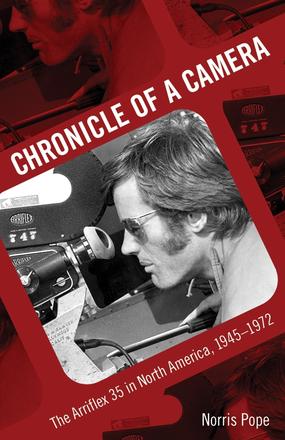
Chronicle of a Camera
The Arriflex 35 in North America, 1945–1972
A history of the lightweight workhorse camera that transformed postwar cinematography
Description
This volume provides a history of the most consequential 35mm motion picture camera introduced in North America in the quarter century following the Second World War: the Arriflex 35. It traces the North American history of this camera from 1945 through 1972—when the first lightweight, self-blimped 35mm cameras became available.
Chronicle of a Camera emphasizes theatrical film production, documenting the Arriflex's increasingly important role in expanding the range of production choices, styles, and even content of American motion pictures in this period. The book's exploration culminates most strikingly in examples found in feature films dating from the 1960s and early 1970s, including a number of films associated with what came to be known as the “Hollywood New Wave. ” The author shows that the Arriflex prompted important innovation in three key areas: it greatly facilitated and encouraged location shooting; it gave cinematographers new options for intensifying visual style and content; and it stimulated low-budget and independent production. Films in which the Arriflex played an absolutely central role include Bullitt, The French Connection, and, most significantly, Easy Rider. Using an Arriflex for car-mounted shots, hand-held shots, and zoom-lens shots led to greater cinematic realism and personal expression.
Reviews
"Norris Pope's Chronicle of a Camera reads oddly like a thriller documenting how a collection of ornery and independent visual storytellers used a remarkable tool, the Arriflex II, to change how films are made and to change what kinds of films are possible in America. Pope is an oddity, an academic who illuminates the story of a camera he uses and loves. The Arriflex II allowed cinematographers and directors to work on location, telling stories outside of Hollywood's sound stage production formulas and practices. From the end of World War II until the late 1970s, these artists created a film counterculture that was a worthy artistic competitor to the European cinema. That counterculture in turn provided heroes for a film school generation that wanted to believe that independent and personal cinema is possible in America. Europeans knew the Arri was tough, reliable, portable, and affordable. How it enabled our own new waves in America, despite industry opposition, is a story Pope tells accurately and readably. Chronicle of a Camera should be essential reading for anyone interested in how independent narrative cinema became a reality in the United States."
- Charles V. Eidsvik, author of Cineliteracy: Film Among the Arts